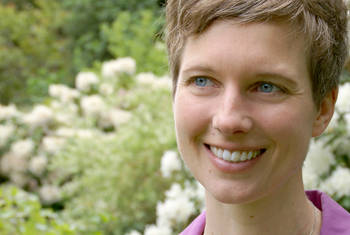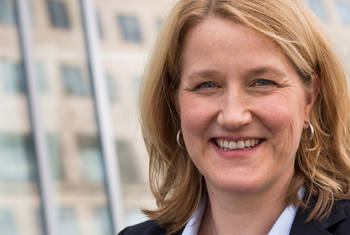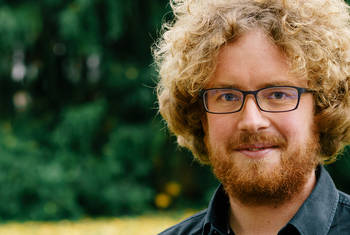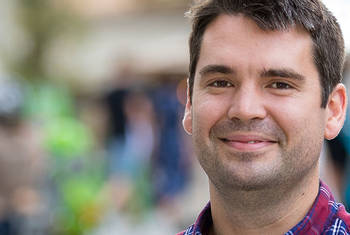Susan Trumbore What Happens to Carbon Dioxide in Plant and Soil Systems?
Susan Trumbore is Director of the Department of Biogeochemical Processes at the Max Planck Institute for Biogeochemistry and Professor of Earth System Science at the University of California, Irvine. A central focus of Trumbore’s research is how radiocarbon can be used to illuminate and explain the carbon cycle. Co-coordinator of the joint German-Brazilian project, ATTO (the Amazon Tall Tower Observatory), Trumbore is the inaugural editor in chief of the journal AGU Advances. Elected to the American National Academy of Sciences in 2010, Trumbore received the Benjamin Franklin Medal for Earth and Environmental Science in 2018.
Area of Research
Biogeochemistry
since 2009
Director and Scientific Member
Max Planck Society (more details)
Max Planck Institute for Biogeochemistry
2000-2009
Professor
University of California, Irvine
1996-2000
Associate Professor
University of California, Irvine
1991-1996
Assistant Professor
University of California, Irvine
1990-1990
Postdoc
Columbia University, New York
Lamont‐Doherty Geological Observatory
1989-1989
Postdoc
Lawrence Livermore Laboratory (National Ignition Facility)
1989
Ph.D.
Columbia University, New York
Geochemistry
1989
Studies in Geology
University of Delaware
- Leopoldina (since 2015)
- DFG‐Projekt „Nichtlinearitäten und alternative Zustände biogeochemischer Kreisläufe in terrestrischen Ökosystemen" (since 2014)
- DFG‐Projekt „INFRA2 ‐ Integriertes Graduiertenkolleg AquaDiva“, Teilprojekt zu SFB 1076 „AquaDiva: Forschungsverbund zum Verständnis der Verknüpfungen zwischen der oberirdischen und unterirdischen Biogeosphäre“ (since 2013)
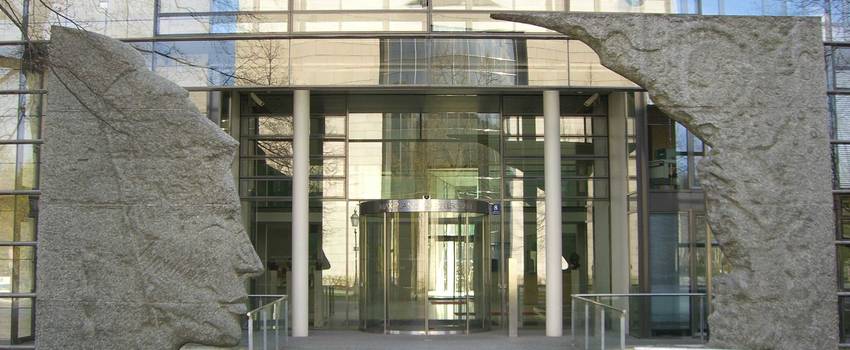 © Maximilian Dörrbecker
© Maximilian Dörrbecker
Max Planck Society
"The Max Planck Society is Germany's most successful research organization. Since its establishment in 1948, no fewer than 18 Nobel laureates have emerged from the ranks of its scientists, putting it on a par with the best and most prestigious research institutions worldwide. The more than 15,000 publications each year in internationally renowned scientific journals are proof of the outstanding research work conducted at Max Planck Institutes – and many of those articles are among the most-cited publications in the relevant field." (Source)
Institute
Max Planck Institute for Biogeochemistry
"The Max Planck Institute for Biogeochemistry in Jena conducts research into global material cycles and the associated chemical and physical processes. Carbon, oxygen, hydrogen and nitrogen are four elements that are crucial to life whose compounds are transported by plants, animals and microorganisms and distributed via the air and water. The scientists in Jena seek to gain a better understanding of the complex interaction between the organisms in the soil and the greenhouse gases in the atmosphere, as well as the influence of humans on these natural processes. How do ecosystems react to various climate conditions, land-use practice and species diversity? To this effect, scientists at the Institute compare historical data with current observations from field experiments and measurement campaigns in order to draw conclusions on the future adaptability of organisms. They also work closely with the Max Planck Institutes for Meteorology in Hamburg and Chemistry in Mainz." (Source)
Map
The accumulation of carbon dioxide (CO2) in the Earth’s atmosphere is responsible for one of the most pressing problems of our age, global warming. In this video, SUSAN TRUMBORE analyses the key role that plant and soil systems play in the carbon cycle in order to better understand how they can assist us in combating this issue. Trumbore explains how Carbon-14 (or radiocarbon), a byproduct of atmospheric weapons testing in the 1960s, can be traced through plant and soil systems in order to understand how those systems store and process CO2. Providing insights helpful to foresters as well as farmers, the research demonstrates that improving our understanding of these natural systems could help us to effectively respond to the greatest challenge facing our planet in the 21st Century.
LT Video Publication DOI: https://doi.org/10.21036/LTPUB10795
Soil Organic Matter Persistence as a Stochastic Process: Age and Transit Time Distributions of Carbon in Soils
- Carlos A. Sierra, Alison M. Hoyt, Yujie He and Susan E. Trumbore
- Global biogeochemical cycles
- Published in 2018
Radiocarbon Constraints Imply Reduced Carbon Uptake by Soils During the 21st Century
- Yujie He, Susan E. Trumbore, Margaret S. Torn, Jennifer W. Harden, Lydia JS Vaughn, Steven D. Allison and James T. Randerson
- Science
- Published in 2016
How Fresh is Maple Syrup? Sugar Maple Trees Mobilize Carbon Stored Several Years Previously During Early Springtime Sap-ascent
- Jan Muhr, Christian Messier, Sylvain Delagrange, Susan Trumbore, Xiaomei Xu and Henrik Hartmann
- New Phytologist
- Published in 2016





